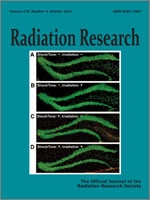MEETING REPORT (1)
REGULAR ARTICLES (9)
COMMENTARY (1)
IN MEMORIAM (1)
BOOK REVIEW (1)

No abstract available
Cranial Irradiation Leads to Acute and Persistent Neuroinflammation with Delayed Increases in T-Cell Infiltration and CD11c Expression in C57BL/6 Mouse Brain
No abstract available
No abstract available
No abstract available
